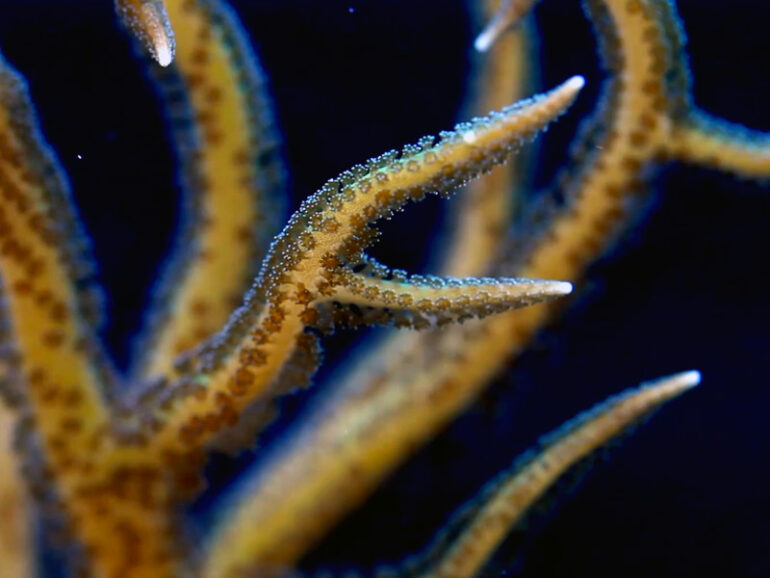If ever one is looking to get into small polyp stony (SPS) corals but is hesitant because of the challenges associated with them, consider an SPS coral from the genus Seriatopora. Seriatopora corals, commonly referred to as bird’s nest corals, are very fast growing, are forgiving in their care requirements, and may be the perfect way to ease into the world of SPS.
In some respects, the care requirements are similar to those of more mainstream SPS corals, such as Acropora and Montipora. They do very well with plenty of flow for example. Although the bird’s nest corals are lumped in with other SPS corals, it is their differences that make them better suited for beginners.
Care requirements
Lighting
The lighting needed depends a lot on the type of bird’s nest. I came across a study on the genetic differences in these corals. Turns out that Seriatopora from different regions of the reef, though the same species, are very different genetically.
I’ve seen here at the greenhouse that there are varieties like the yellow bird’s nest that can thrive in very dim lighting while other varieties, such as the pinks and birds of paradise, require stronger lighting to develop the most appealing coloration. In the video, there are several shots of the same type of bird’s nest, but grown under different lighting. They look like completely different species.
It is important to note, however, that some types do not fare well at all under intense light. If you put one of the low-light bird’s nests into a high-light tank, what we’ve seen is a rapid decline in health and bleaching, even if great care was taken to acclimate it to the new lights.
Flow
Bird’s nests like a good amount of flow, and short of blowing the colony off the rocks, I have not seen a setup that provided these corals with too much flow.
Buying Bird’s nest corals (frags vs. colonies)
This leads me to a thought I had about purchasing colonies of bird’s nests. It is a better idea to purchase a small frag and allow it to grow. This makes sense for a few reasons:
- Frags are generally less expensive, and this coral, under the right conditions, will grow into a full colony quickly. It is literally one of the fastest growing SPS in the hobby.
- Large colonies are brittle and extremely difficult to transport without damage occurring. This is true for both local sales and online sales. Bird’s nest corals have sharp tips that can easily puncture bags, but are brittle enough that they can break apart from minor bumps against the walls of plastic containers.When we ship them, we typically start with small frags and then secure them the best we can with floats. However, they can still break during shipping. The bright side to this is that the colony recovers from breaking very quickly and all the little bits that broke off can be re-glued to a new substrate to start new colonies.
- Assuming for a moment a large colony shows up in one piece, the last major problem is the shape of the colony itself. A bird’s nest will grow quickly to a particular shape to maximize the flow it was receiving in its previous home. The flow patterns in the new aquarium may not be well suited for its given shape. This manifests in the coral decaying from the inside where it was not receiving enough water motion.
In short, we recommend starting with relatively small frags or colonies and exercising a little bit of patience. Given their growth rate, it won’t take much patience at all.




I have a green birds nest and it has started to drop small portions or limbs on to the sand bed. It almost looks like it is a slow stretching of the limb before it drops. Any ideas?
Hi,
I have a 300L reef tank and would like to try this coral. I have ~50x tank turnover including a Wp25 for a more random water flow. The tank is 100(L)x50(W)x70(D)cm and has 4 x 39W T5s.
From your description I’d place the coral near the WP25 and towards the surface to get more light.
I assume that the flow will be ok? But I’m more concerned about the light requirement. Is what I have insufficient/ok/fine?
Thanks,
Adam
Hi Adam – sounds like you’ve got your bases covered. Depending on what variety you end up getting, you’ll be able to adjust positioning until you find a spot where it’s happy with lighting. In terms of flow, you won’t have to worry about having too much. Happy reefin’!
Nice write up of a coral I have yet to try, but would like to try. Especially interesting is what you have witnessed with the different lighting required by the different colors!